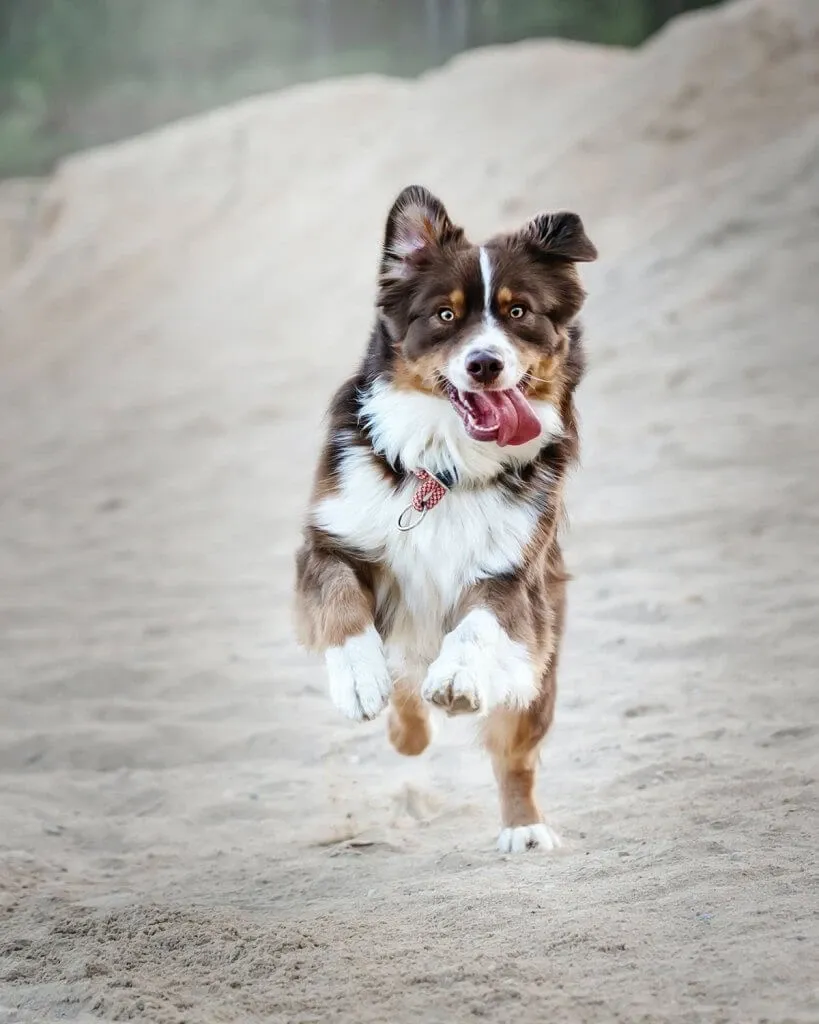Discovering your dog scratching relentlessly after applying flea treatment can be alarming. While it’s common for dogs to show some restlessness or even increased itching following a flea treatment, especially if they were heavily infested, this behavior can also signal other issues. Many dog owners report their canine companions acting unusually, seeming to have more energy, or exhibiting more intense scratching after starting a flea treatment regimen. This often happens because the parasites are dying off and are no longer actively biting, but there can be several other underlying causes that warrant your attention. Understanding these reasons is crucial to ensure your pet’s comfort and well-being.
Understanding Why Your Dog Might Itch After Flea Treatment
There are a few key reasons why your dog might experience intense itching or restlessness after flea treatment. Pinpointing the exact cause can help you decide on the best course of action.
The “Dying Flea Dance”
The most common reason for increased itching is often referred to as the “dying flea dance.” When flea treatments, particularly topical or oral ones, begin to work, the fleas on your dog’s body are affected. As they die, they may become agitated, causing them to bite more vigorously in their final moments. This increased biting activity, even from dying fleas, can lead to heightened itching and discomfort for your dog. This is a temporary phase and usually subsides as all the fleas are eliminated.
Chemical Irritation from the Treatment
Some dogs can be sensitive to the active ingredients or other chemicals present in flea treatments. Products like topical spot-ons are applied directly to the skin, and some dogs may develop localized skin irritation, redness, or a burning sensation at the application site. This irritation can manifest as excessive scratching, licking, or biting at the treated area. It’s important to monitor the application site closely for any signs of adverse skin reactions.
Allergic Reactions to Flea Medication Ingredients
Beyond simple irritation, some dogs may experience a full-blown allergic reaction to the ingredients in flea medicine. An allergic reaction can cause more generalized itching across the body, not just at the application site, along with other symptoms. These reactions can range from mild skin hives and intense itching to more severe systemic responses like facial swelling, difficulty breathing, vomiting, or diarrhea. If you suspect an allergic reaction, it’s a medical emergency.
Pre-existing Skin Conditions or Sensitivities
Sometimes, the flea treatment isn’t the primary cause of the itching, but rather a trigger that exacerbates an existing skin condition. Dogs with underlying allergies (environmental, food, or flea allergy dermatitis – FAD) or sensitive skin may react more intensely to the changes brought on by the flea treatment or even the residual flea bites. The treatment might kill the fleas, but the skin inflammation or allergic response from previous bites could persist, leading to continued or even increased itching.
Persistent Flea Infestation
In some cases, the “crazy itching” might indicate that the flea treatment wasn’t fully effective, or your home environment still harbors fleas. If the treatment used isn’t strong enough, applied incorrectly, or if there’s a heavy re-infestation from the surroundings (carpets, bedding, yard), new fleas could continue to bite, leading to persistent itching. This highlights the importance of treating the dog and the environment for effective flea control.
 A small corgi dog resting on the floor, possibly recovering from a veterinary check-up related to flea treatment.
A small corgi dog resting on the floor, possibly recovering from a veterinary check-up related to flea treatment.
When to Be Concerned: Red Flags to Watch For
While some post-treatment itching can be normal, there are specific signs that indicate you should seek veterinary attention immediately.
- Severe or Constant Scratching: If the itching is relentless, preventing your dog from resting, eating, or playing normally, and lasts for more than 24-48 hours after treatment.
- Skin Redness, Swelling, or Lesions: Excessive redness, swelling, hives, pustules, or open sores developing on the skin, especially at the application site or generalized across the body.
- Lethargy or Behavioral Changes: If your normally energetic dog becomes unusually tired, withdrawn, or exhibits other behavioral shifts after treatment.
- Gastrointestinal Distress: Vomiting, diarrhea, or loss of appetite are serious signs that could indicate a systemic reaction to the medication.
- Breathing Difficulties: Coughing, wheezing, or labored breathing are emergency signs of a severe allergic reaction.
- Facial Swelling: Swelling around the face, muzzle, or eyes is another indicator of a serious allergic response.
If you observe any of these concerning symptoms, contact your veterinarian right away. They can help determine if the restlessness or itching is due to the flea treatment, an allergic reaction, or if there is another underlying cause requiring specific medical intervention.
What You Can Do to Help Your Itchy Dog
If your dog is itching like crazy, here are some steps you can take to help, always keeping your vet in the loop:
Consult Your Veterinarian Immediately
This is always the first and most important step. Describe the symptoms, the specific flea treatment used (product name, dosage, and date of application), and any other medications your dog is taking. Your vet can provide accurate guidance, recommend immediate relief, or schedule an examination.
Gentle Bathing (if advised)
For topical treatment irritation, a gentle bath with a hypoallergenic shampoo (after checking with your vet if it’s safe and won’t wash off the treatment too soon) might help remove residual chemicals from the skin. Always follow your vet’s advice regarding bathing after flea treatments.
Prevent Self-Trauma
If your dog is scratching, licking, or biting excessively, they can cause skin damage, secondary infections, or hot spots. An Elizabethan collar (e-collar or “cone of shame”) can be a temporary solution to prevent self-trauma while the underlying issue is being addressed.
Consider Alternative Treatments (with vet guidance)
If your dog is reacting poorly to a specific type of flea treatment, your vet may recommend an alternative. There are many options available, and finding the right one is key.
 Two dogs joyfully playing on a sandy beach, enjoying life free from the discomfort of flea infestations.
Two dogs joyfully playing on a sandy beach, enjoying life free from the discomfort of flea infestations.
Types of Flea Treatments and Their Potential Effects
There are a variety of flea treatments available for dogs, each with its own set of pros, cons, and potential side effects that could contribute to itching or discomfort.
Topical Spot-Ons
These are liquids or gels applied directly to your dog’s skin, typically between the shoulder blades. They are absorbed into the skin’s oils or bloodstream to kill fleas and ticks.
- Pros: Easy to apply, long-lasting (usually a month).
- Cons: Can cause localized skin irritation, allergic reactions, or temporary greasiness at the application site. Dogs might try to lick it off if applied improperly.
Oral Medications
Available as pills, chewable tablets, or liquids, these are ingested by your dog. They work by entering the bloodstream and killing fleas when they bite the treated dog. Many also protect against heartworm disease.
- Pros: No messy application, safe for swimming immediately, often very effective.
- Cons: Can cause gastrointestinal side effects like vomiting or diarrhea in some dogs. Potential for drug interactions with other medications.
Flea Collars
These collars release chemicals that either repel fleas, kill them through contact, or are absorbed into the skin.
- Pros: Long-lasting, relatively easy to use.
- Cons: Can cause skin irritation or rashes around the neck area. Some dogs may be sensitive to the chemicals, and effectiveness can vary. Ensure it’s not too tight or too loose.
Flea Shampoos & Dips
These are used during bathing to kill fleas on contact. Dips are concentrated solutions that are applied after a bath.
- Pros: Provides immediate relief by killing existing fleas.
- Cons: Only works for a short period and does not offer long-term prevention. Can be drying or irritating to the skin if used too frequently or if the concentration is too strong.
Natural/Holistic Approaches
These include various remedies like essential oils (diluted), diatomaceous earth, or herbal supplements.
- Pros: Avoids synthetic chemicals.
- Cons: Often less effective than veterinary-approved products. Many “natural” remedies can still be toxic to pets if not used correctly, and some essential oils are outright dangerous. Always consult your vet before trying these.
 A small, white fluffy dog patiently waiting on a chair, possibly for a vet consultation about flea treatment options.
A small, white fluffy dog patiently waiting on a chair, possibly for a vet consultation about flea treatment options.
Choosing the Right Flea Treatment for Your Dog
The “best” flea treatment isn’t a one-size-fits-all solution; it’s the one that is most effective at keeping fleas and ticks off your dog while also being safe and comfortable for them to use.
Factors to consider include:
- Your dog’s age and health status: Puppies, senior dogs, or dogs with underlying health conditions may require specific formulations.
- Breed sensitivities: Some breeds are known to be more sensitive to certain medications.
- Lifestyle: Dogs that swim frequently or spend a lot of time outdoors might benefit from different types of treatments.
- Severity of infestation: A heavy infestation might require a more aggressive approach initially.
- Other parasitic concerns: Many products offer protection against multiple parasites (e.g., heartworm, intestinal worms).
Your veterinarian is your best resource for choosing the most appropriate flea and tick prevention plan. They can assess your dog’s individual needs, discuss potential side effects, and recommend products that are both effective and safe for your beloved companion.
 A small dog wearing a red and white sweater during a pet wellness visit, highlighting the importance of preventative flea care.
A small dog wearing a red and white sweater during a pet wellness visit, highlighting the importance of preventative flea care.
 An energetic dog running happily on the sand, signifying good health and effective flea and tick prevention.
An energetic dog running happily on the sand, signifying good health and effective flea and tick prevention.
Conclusion
It can be concerning to see your Dog Itching Like Crazy After Flea Treatment, but understanding the potential causes is the first step toward finding relief. Whether it’s the temporary discomfort of dying fleas, a mild skin irritation, or a more serious allergic reaction, prompt action and veterinary consultation are key. Always prioritize your dog’s health by monitoring their behavior and skin, and never hesitate to reach out to your veterinarian for personalized advice and care. By working closely with your vet, you can ensure your dog stays comfortable, healthy, and free from the nuisance of fleas.
For more insights into dog health and effective pet care strategies, explore other articles on Dog Care Story!
